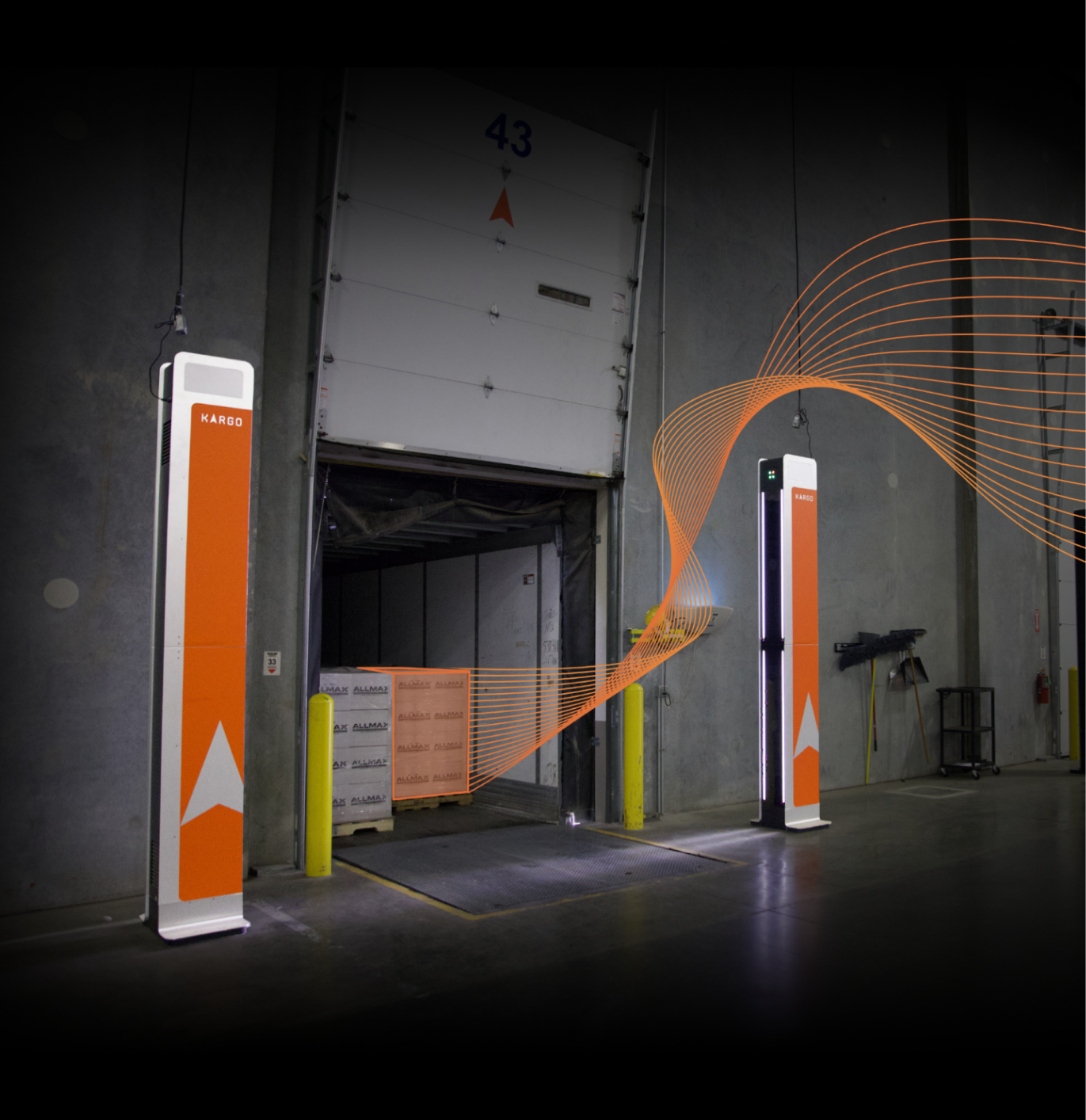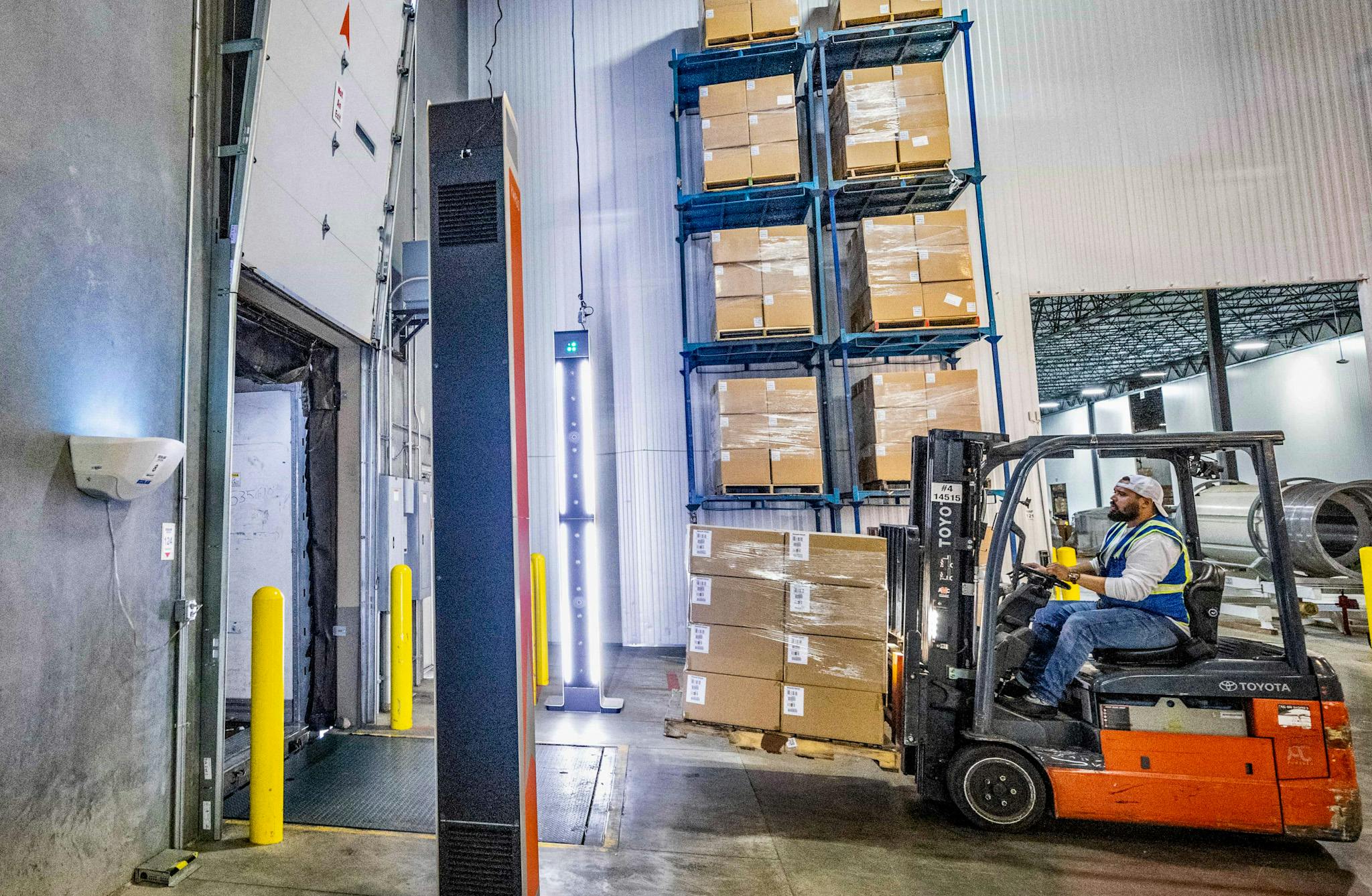How It Works
What Is Computer Vision in Logistics?
| Kargo | 3 min
What You Need to Know



Computer vision can provide a connective layer between physical freight and digital logistics platforms. As part of a machine vision system, cameras capture images of freight labels and marks, which are interpreted by algorithms to determine actions—for example, flagging damage.
At warehouses, Kargo uses computer vision towers to see, record, and interpret freight data automatically at the loading dock door. The Kargo System uses the data to verify real freight against bills of lading and other documentation. By using computer vision to help automate shipping and receiving, companies can track accuracy, optimize workforces, and drive continuous improvements.
Learn how computer vision can optimize your shipping and receiving. Email go@mykargo.com.
How Computer Vision Improves Logistics
As supply chains adjust to new complexities, artificial intelligence extends capabilities and helps keep inventory in motion. At the shipping and receiving level, accuracy and speed create challenges. Issues can undermine larger supply-chain cost efficiencies and constrain warehouse throughput.
The issues themselves might seem simple. For instance, freight counts may be over or under. Damages can occur to inventory, pallets, or labels.
Their impact is more complex. Overages, shortages, and damages—more commonly called OS&D—trigger claims processes that suck up cash and labor resources. Uncertainty over who is accountable can harm partner relationships.
Some of the reasons for these challenges are bigger than anything happening on the truck or in the warehouse:
- Outdated physical infrastructure, from factory to final mile, puts pressure on every leg of the freight journey.
- Supply chain worker shortages limit or create inconsistencies in freight handling and contribute to delays, errors, and damages.
- Outdated digital infrastructure requires manual scanning and inspection, dense spreadsheets, and ongoing email management.
Computer vision helps mitigate the impact of these problems, while empowering workforces to do more.
With Kargo Towers, for instance, two wide field-of-view cameras build contextual awareness, detecting dock doors, pallet count, and pallet damage. A vertical stack of high-precision cameras run at 144 million pixels per second to record and identify any freight as it passes the towers, reading barcodes, labels, logos, and other attributes.
Freight data is captured and shared to the Kargo Platform, where you can see automatically flagged OS&D exceptions and access visual proof to help resolve claims.
Let’s compare this to manual shipping and receiving: A forklift driver hops in and out of his seat with every load, maneuvering around pallets to look for labels to scan.
The available pallets may not offer a complete picture of freight accuracy. Labels may be inconsistent, behind cellophane, or missing. Entire pallets may be missing. Whatever doesn’t match the bill of lading may not be discovered until later, when it’s harder to prove that the warehouse isn’t at fault for discrepancies and damages.
As claims progress, friction can arise between partners. Some companies simply swallow the losses on OS&D as policy, because it’s more cost-effective than the work effort required to resolve them with consistent accuracy.
Computer vision finds freight inconsistencies just like a human would, accelerates OS&D discovery and improves claims resolution with real-time information and visual proof.
By translating what computer vision sees into actionable data, Kargo connects physical and digital logistics for seamless shipping and receiving and improved supply chain management.
Questions?
Connect With us
Ask us anything or drop your email to stay in touch





